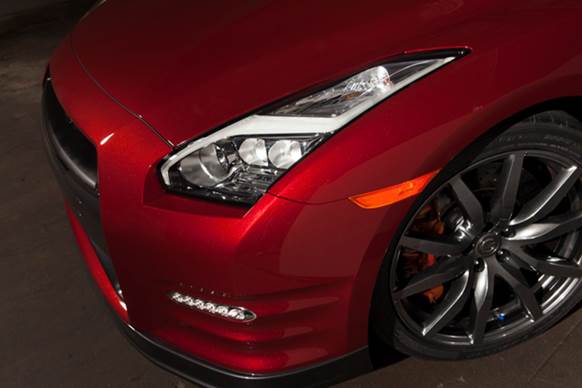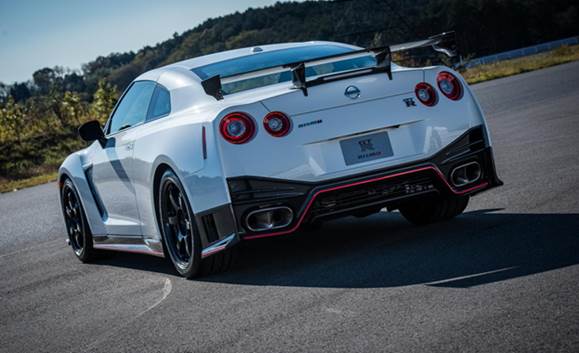The first drive was in the base car, a half-hour loop spent on Japanese country roads in a right-hand-drive GT-R on the left side of the road. While it is still powerful as all get-out, the entire experience was, indeed, greatly refined. The suspension is noticeably smoother than previous GT-Rs, yet just as responsive. The cabin is quieter than before, and the interior appointments feel more luxurious. The steering is just as quick, and the car seems to follow our in-puts telepathically. Hammer the throttle on the highway and the GT-R roars forward. How much difference is there really between 545 and 600 hp? Surely the quarter-mile time will drop, but in normal driving, not much.

Next we drove a right-hand-drive GT-R Nismo around a road course called Sodegaura. The track configuration we used was sort of a Japanese NASCAR oval, except we were going the wrong way. That was fine because we were sitting on the wrong side, too. We got only four laps, so mostly we were trying to sort out the corners and figure out where all the limits might be. Thus, we left traction control on, which was OK because in the weird squiggly right-left-right corner in the middle of Sodegaura, we felt the TC working and noticed a little transfer of torque to the front, the same we would feel later as a passenger in a professionally driven GT-R. Launch out of the pits was powerful, as was midrange torque exiting corners. Grip was Krazy Glue sticky. It would have been good to drive an old GT-R back to back with this new Nismo car to really feel the differences. As it was, it felt remarkably precise in corners. We could have gone much faster. More laps would have allowed us to switch off all the electronics and start to slide it around a little. Suffice to say the GT-R Nismo is fast and powerful – faster and more powerful than the base GT-R, but a few hundred more laps would have allowed us to glean more about the difference 55 extra hp and suspension refinements make.

Then, finally, we got to ride left-seat shotgun in the Time Attack model with a professional. He took an odd line through and he wiggled the steering wheel through the apexes. While the differences going from base to Nismo models were far more noticeable, the jump from the Nismo to Time Attack was not as large in terms of performance gained. Unless you’re racing it, we say save your yen.
The GT-R deserves all the comparisons it will get to the Lexus LFA, Ferrari 458, McLaren MP4-12C and other supercars. It is solidly in that league.

U.S. pricing hasn’t been announced yet, but the Nismo version in Japan starts at 15.015 million yen or somewhere around $150,000, depending on exchange rates. Is it worth it? How dare you ask such a question?!
But hey, go ahead and drive everything else first, then decide. And if you figure out a way to drive everything else first, let us know how you did that, will ya?
Specifications On sale: January (Summer for Nismo and Time Attack models) Base price: $103,000 (est) Drivetrain: 3.8-liter, 545-hp, 463-lb-ft twin-turbocharged V6; AWD, six-speed dual-clutch sequential manual Curb weight: 3,836 lb 0-60 mph: 2.7 sec (est) Fuel economy: 16/23/19 mpg |